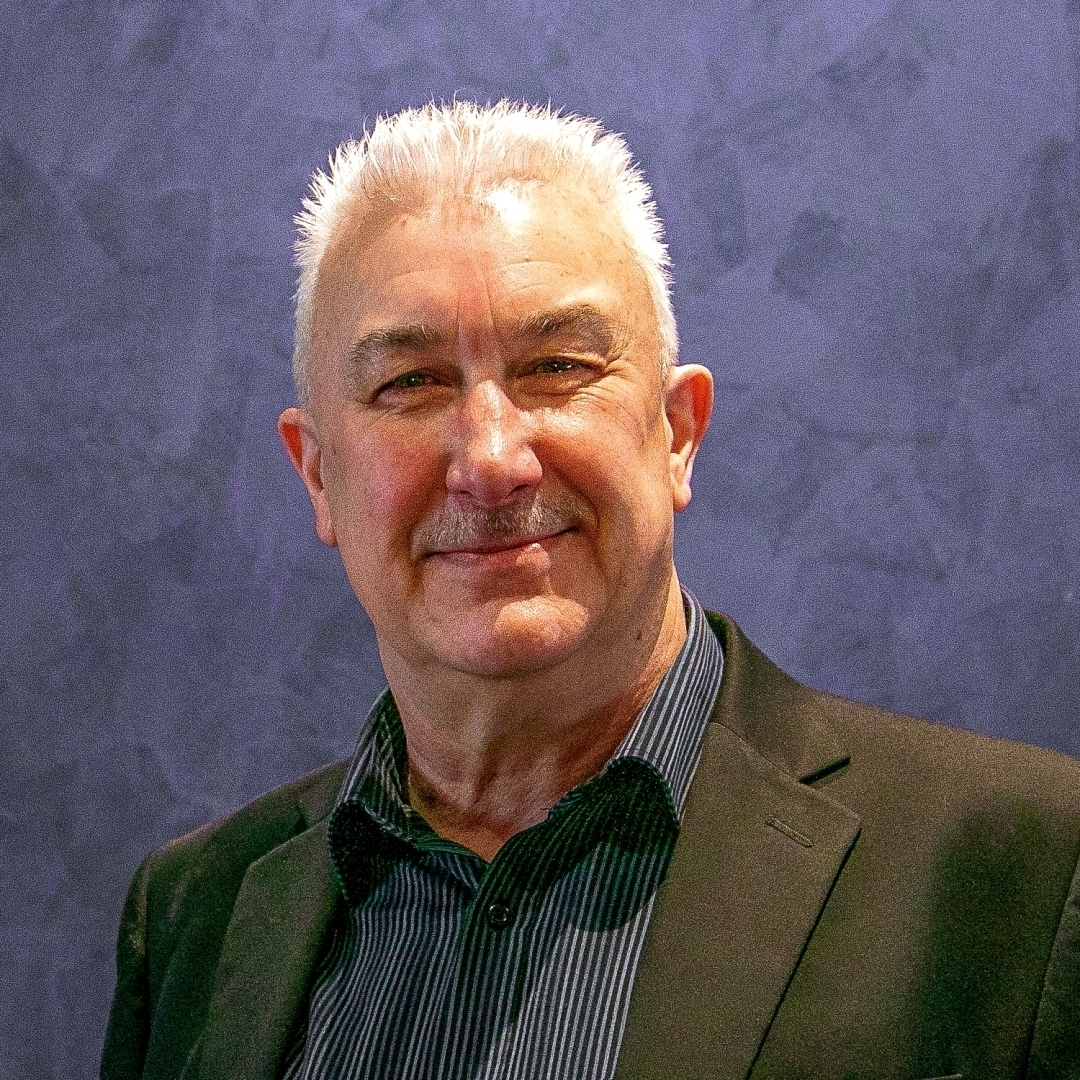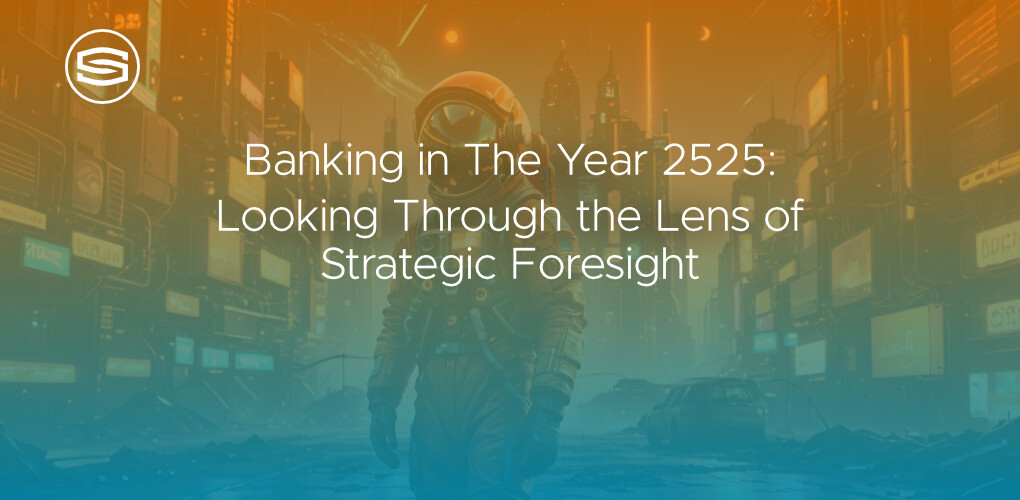
Insights & Opinions
Banking in The Year 2525: Looking Through The Lens of Strategic Foresight
Tue, 17 Sep 2024


The song; “In the year 2525” was a one-hit wonder that intrigued me from the moment I first heard it. Even more so in later years when I achieved a qualification in Strategic Foresight and I realised just how prescient the lyrics of this song are!
Foresight professionals are commonly referred to as “Futurists”, a term I am personally not fond of ever since the media started peddling “predictions” from self-labelled Futurists as facts.
The first thing any foresight professional will stress is that we don’t make predictions, as there is no such thing as THE future.
Read that again. Carefully.
The emphasis is on the word “THE”, because it implies that there is only one, singular path from this point forward, which is fundamentally untrue.
A foresight professional will quickly state that there are an infinite number of possible futures (plural) from this point forward, a subset of which are plausible and an even smaller subset of which are probable.
The primary purpose of a strategic foresight exercise is to chart these possible, plausible and probable futures and then identify the desirable future that you want to realise. Then, you can consider what needs to be done for that future to come about, bearing in mind that your desired future may not currently be the most probable. The exercise aims to help you figure out how to increase the probability of this happening.
Foresight professionals don’t rely on “gut feel and intuition” (although experience does have a role to play). We apply a wide range of tools and frameworks, such as systems thinking, backcasting, causal loop (or layered) analysis, cross-impact analysis, three-horizon thinking, horizon scanning and trend analysis and many, many more.
So what does this all have to do with Banking in the year 2525?
The most common concept included in a futures scenario is the “Cone of Plausibility”, which visually depicts future scenarios within a specified time horizon.
I don’t personally know any futurists who work on a 500 year timeline although I’ve no doubt that there are those who do. I’m more of a “practical futurist” who works most frequently on 3–5-year time horizons. (This has, by the way, significantly reduced from when I first entered the discipline, when a 10-year time horizon was a perfectly feasible time frame to work within. The sheer speed at which things, particularly technology, politics and economics, can change has made this significantly more difficult these days.)
But, it’s an academically interesting starting point to look at the future of banking and perhaps challenge our assumptions.
Consider - in 500 years:
- Will we still have banks?
- Will money still exist as a concept?
- If banks and/or money are no longer needed, what will replace them?
The interesting thing for me is that if you answered “no” to either of the first 2 of those questions, I’d immediately start asking you “Ok, so when do you think the change would happen by? In 400, 300, 200, 100 years time?”.
And there we start getting a few boundaries to our cone of plausibility and possibly even a reduction in our time horizon. Either or both of these scenarios are possible, some might even say plausible, but what might make them probable?
Foresight professionals use a number of different constructs to help people unlock their creative thinking and explore the future, my favourite being my own adaptation of a simple storytelling technique that can be quickly demonstrated and immediately applied by a group of people from different disciplines across an organisation.
(Fun fact - many well-known brands, like Nike, BMW, Google, Microsoft, Samsung, and Intel, employ full-time Futurists and staff sci-fi writers to help envisage a wide range of futures. While it’s not common for banks to use sci-fi writers, many do have Futurists on their staff.)
Across the multitude of futures they envisage, there will inevitably be some that will fall into the “dystopian” or “nightmare” future category and others that will fall into the “utopian” or “fairytale” category.
Consider the following possible scenarios for banking in the year 2525:
Scenario 1: Dystopian Future
Global economy collapse, infrastructure in ruins, widespread conflict and anarchy.
In a world where governments have collapsed and societal norms have broken down, the concept of money as we know it could become obsolete.
Will Money Still Exist?
In this dystopian future, money could lose its traditional role. With no stable government or economy to back any currency, trust in centralised or even decentralised money systems would erode. Instead, barter systems could re-emerge, with people trading goods, services, and skills directly. Resources like food, clean water, and energy would likely become the most valuable currencies in a survivalist economy.
In more organised regions, alternative currencies might arise based on tangible resources—think trade in precious metals (like gold or silver) or even local resources like fuel or rare materials.
Cryptocurrencies could survive in isolated digital enclaves, but they would likely be scarce due to the destruction of infrastructure needed to support them (technology, internet, electricity etc).
Will Banks Be Needed?
Banks, in their current form, would likely be irrelevant. Instead of institutions that store wealth and facilitate trade, people would rely on local networks or micro-communities for resource management. Small groups could set up physical “vaults” or safekeeping institutions to store valuable items, or possibly even use tech-driven barter systems on local networks that don’t require global infrastructure.
Replacements for Banks:
- Resource Bartering Networks: Communities would rely on informal networks for the exchange of goods and services, based on trust, reputation, and local security.
- Local Leaders: In less secure areas, powerful individuals or groups (like warlords or local militia) could act as de facto banks, controlling and distributing resources in exchange for loyalty or protection.
Scenario 2: Utopian Future
Borderless world, abundance, and harmony; conflict-free society.
In a utopian future where technological advancement solves scarcity and creates a world of abundance, the very need for money and banks could diminish, if not disappear entirely.
Will Money Still Exist?
In a world of complete abundance, money may not exist at all. If everyone has access to everything they need—food, shelter, healthcare, education—there would be no need for currency. Post-scarcity societies would distribute resources based on need, desire, or contribution, possibly governed by AI systems that optimise the flow of goods and services.
Alternatively, if there is still a need for trade, it may be conducted using a reputation-based economy. People could earn "credits" based on their contributions to society, innovation, or goodwill. These credits wouldn’t function as money but more as social capital, which could unlock access to specific experiences or privileges.
Will Banks Be Needed?
In this scenario, traditional banks would be completely unnecessary. Without scarcity, there's no need for savings, loans, or credit. Transactions would be instant, possibly facilitated by decentralised, AI-driven systems.
Replacements for Banks:
- AI-managed Resource Allocation Systems: An advanced AI system could manage the distribution of resources based on real-time needs and societal priorities, ensuring that everyone has what they require without the need for financial transactions.
- Reputation Economy Platforms: People might earn value through social contribution, with AI systems assigning resources based on one’s impact, creativity, or positive influence on society.
Well, scenarios 1 and 2 don’t look great for banks, so what if we considered a “status quo” 3rd scenario?
Scenario 3: "Business As Usual" Future
Humanity and the global economy remain relatively stable, or at least similar to today.
In a future where the current trajectory continues, with technological and economic development happening at a moderate pace but without radical changes to societal structure, money and banking would likely evolve but not disappear.
Will Money Still Exist?
Yes, money will still exist, but its form will change. Physical cash will likely be completely phased out and replaced by digital currencies. Central banks may fully adopt CBDCs (Central Bank Digital Currencies), with all transactions occurring digitally. Private currencies, created by corporations or blockchain-based decentralised networks, could also coexist with government-backed currencies.
Will Banks Be Needed?
Banks will still be around, but they will be vastly transformed. Instead of focusing on storing money, issuing loans, and facilitating transactions, banks would evolve into financial service providers that focus on data-driven wealth management, personalised financial products, and advisory services.
Traditional banking branches might become obsolete, replaced by fully digital interfaces or AI-driven personal finance assistants.
Replacements for Banks:
- Fintech Ecosystems: A blend of fintech startups, tech giants, and decentralised finance platforms could offer banking-like services without needing traditional institutions. Users might manage their assets on these platforms using AI-powered apps.
- Centralised & Decentralised Systems: CBDCs will likely coexist with decentralised finance (DeFi) systems, meaning people could choose between government-backed financial systems or operate within decentralised, peer-to-peer systems for loans, savings, and investments
Interestingly, this 3rd scenario looks highly probable within the next 3-5 years, and we’re back into my comfort zone! (Please note this is a very simplistic illustration - in a true strategic foresight exercise there would be many more scenarios to consider!)
If I were about to collaborate with a bank on a strategic foresight project to explore the next 3-5 years, the first three things I’d plot on the cone of plausibility happen to be the exact same 3 things that we have covered in our white papers so far this year here at The Banking Scene:
- Embedded Finance – will be even more widespread than you can possibly imagine today
- Artificial Intelligence – we’ve only just begun to scratch the surface of how banks are using it, but what happens when the customers start using their own AI to talk to our AI?
- Customer Engagement – if you take scenarios 1 & 2 above as the forces pulling customers away from you, how are you going to keep them engaged with your brand?
I’m afraid you’ll have to attend our events next year as we explore A Banking Metamorphosis or wait for future white papers to find out what else I’d put on my list, as my list is of course The Banking Scene’s list 😇
Does your organisation undertake any form of futuring exercise as part of their strategic planning?
If you show me yours, I’ll show you mine – deal?
(Final fun fact – the song I mentioned in the first paragraph covers a time span of 10,000 years, which I don’t think even the most ambitious foresight professionals currently work on, although I stand to be corrected on this!).



